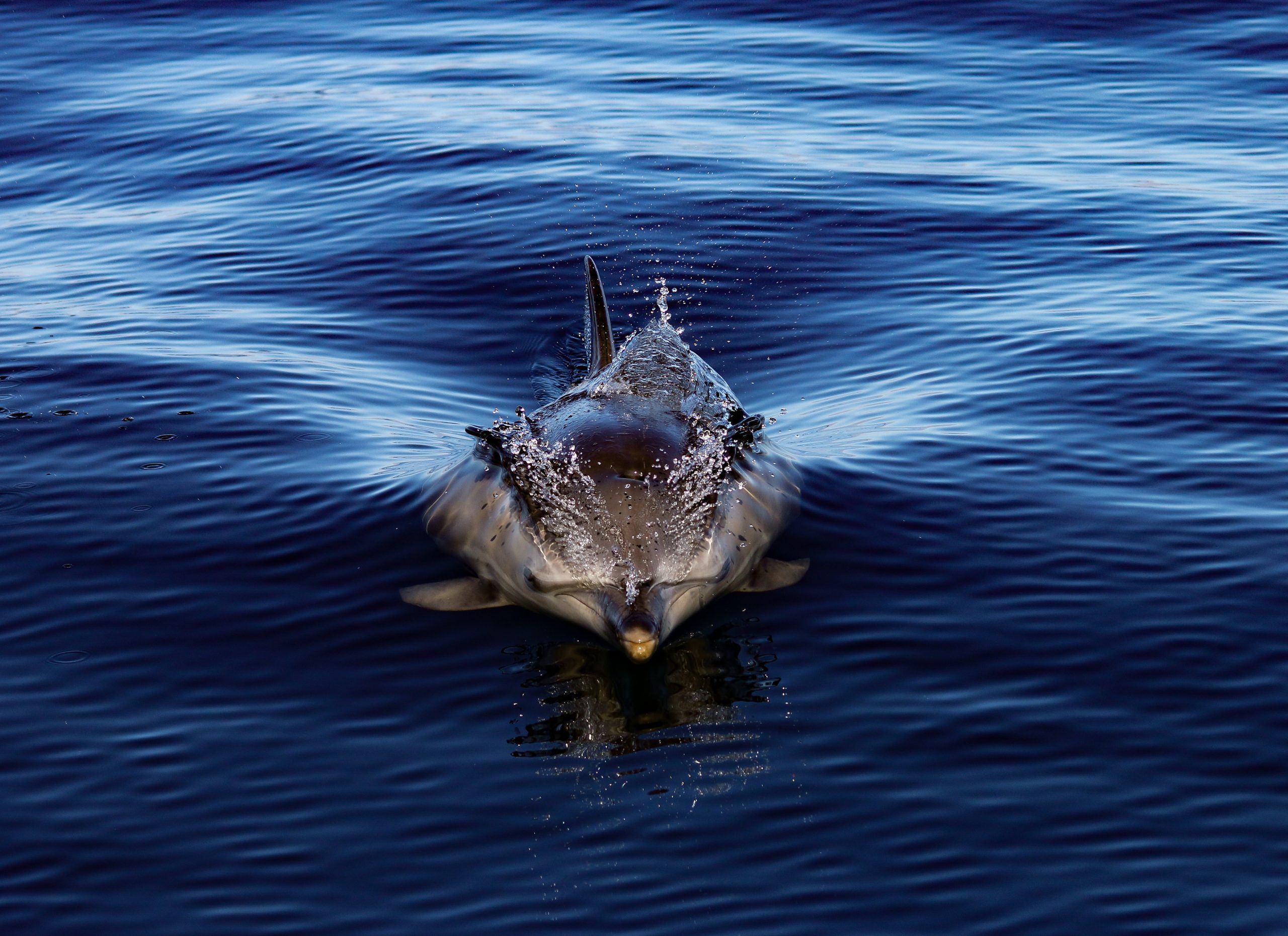Common dolphins are inquisitive, sociable and distinctive dolphins, with a yellow or tan hour-glass panel on the sides of their bodies. They are energetic and boisterous, often approaching vessels to bow-ride.
Common dolphins are widespread on the west coast of Scotland, but they are less frequently found in the North Sea. Usually, they are seen in large groups of 10-50 animals whilst occasionally they can number in the hundreds. They feed on small schooling fish and squid and are known to work together to catch their prey.
Previously at the northern extent of their range around Scotland, sightings are increasing in Scottish waters, including during the winter, possibly due to climate change and higher water temperatures altering prey distribution.
Action Needed
- Ensure all existing EU marine mammal protection legislation is, at a minimum, retained within UK law
- Support the implementation of the Scottish Biodiversity Strategy, specifically:
- Expand Scottish marine protected areas by 30% by 2030
- Increase the number of sites in Scotland’s Marine Protected Area network with specific fisheries management measures, and designate at least 10% of Scotland’s seas as Highly Protected Marine Areas
- Invest in nature – implementation of Biodiversity Investment plan
- Press for better bycatch monitoring and reporting from vessels fishing in Scottish waters
Threats
In the waters to the north and west of Scotland, common dolphins are under threat from incidental entanglement (bycatch) in fisheries. PCB contamination and noise pollution, including from seismic surveys, military activities and offshore developments, may also adversely impact the species. Malnutrition and disease are a growing concern for common dolphins and as our seas get busier disturbance from recreational water users is having an increased impact. As with all species of cetacean, the unknown impacts of climate change on them, their prey and the habitats on which they rely, is an overarching concern. All threats however are cumulative and should not be seen in isolation.
MSP Nature Champion



